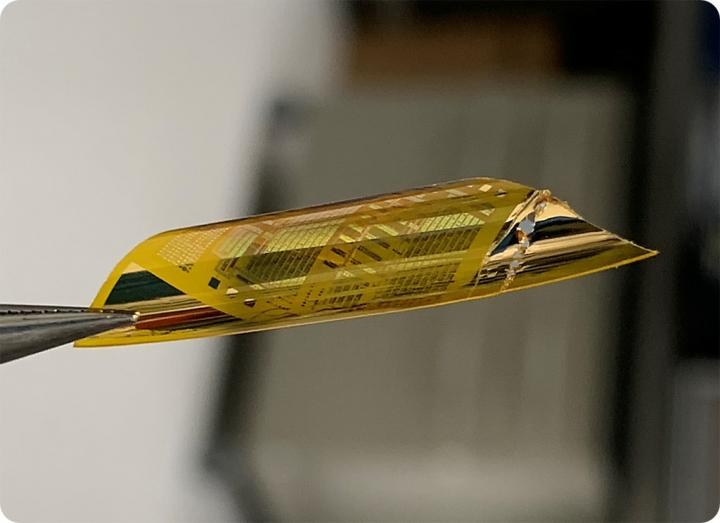Feb 12 2020
Scientists at King Abdullah University of Science and Technology (KAUST) have developed a manufacturing method that has led to the creation of hybrid organic transistors for use in sophisticated large-area electronics and electronic displays.
 Thin-film transistors made from metal oxides have useful properties, including optical transparency and high charge-carrying capacity, and they are increasingly being used in organic light-emitting diode displays. Image Credit: © 2019 KAUST.
Thin-film transistors made from metal oxides have useful properties, including optical transparency and high charge-carrying capacity, and they are increasingly being used in organic light-emitting diode displays. Image Credit: © 2019 KAUST.
Made from metal oxides, thin-film transistors (TFTs) have certain beneficial properties, such as high charge-carrying capacity and optical transparency. These transistors are increasingly being utilized in organic light-emitting diode displays.
At present, physical vapor deposition techniques are used to make a majority of the TFTs, but solution-based printing appears to hold excellent potential for a simpler and more economical method. Nevertheless, it has been very difficult to produce metal oxide TFTs with high operating stability and carrier mobility.
Now, an international research team from Greece, China, and the United Kingdom has developed a new hybrid TFT from solution-processed polystyrene layers packed between ultrathin sheets of zinc oxide and indium oxide nanoparticles. The team was headed by Thomas Anthopoulos and collaborators from the KAUST Solar Center.
Much to our surprise, we discovered that the electron mobility of this hybrid TFT was very high. But more importantly, we found that the ability of the device to sustain electrical bias for a long period of continuous operation, without changing its operating characteristics, has improved dramatically.
Dr Thomas Anthopoulos, Professor of Material Science and Engineering, KAUST Solar Center
Earlier, Anthopoulos and collaborators performed a study which demonstrated that TFTs fabricated from two or more metal oxides can produce mobile electron sheets at the interface of the metal oxide layers.
Such electrons move freely over the device, boosting its charge carrying capacity. However, the polycrystalline layers that create the interfaces contain structural defects, and these defects produce election traps that alter the device’s electrical properties.
The scientists discovered that when a polystyrene layer is inserted between the metal oxide layers, followed by applying an ultraviolet-ozone treatment to the same layer, the polystyrene decomposes into smaller molecular species. These molecular species react with the oxide layers, thereby reinforcing the bonds that exist between nanoparticles and preventing some of the electron traps.
The key to the success of our design is the incorporation of an ozone-treated polystyrene interlayer, which passivates the electron traps present on the surface/interface of the metal oxides and increases not only the electron mobility of the device but also its bias-stress stability.
Dr Thomas Anthopoulos, Professor of Material Science and Engineering, KAUST Solar Center
The study offers an easy, economical, and scalable technique for producing TFTs for use in advanced displays and a wide range of other large-area electronics.
Next, we want to see if we can exploit the same electron trap passivation technique for different metal oxide semiconductors or other combinations of materials. I'm confident that we will identify even better-performing materials.
Dr Thomas Anthopoulos, Professor of Material Science and Engineering, KAUST Solar Center